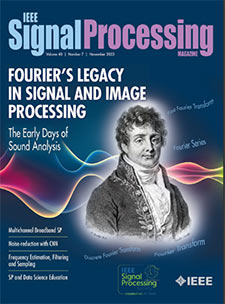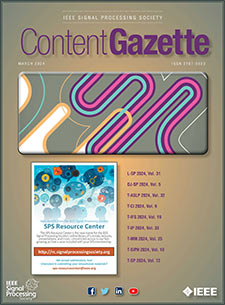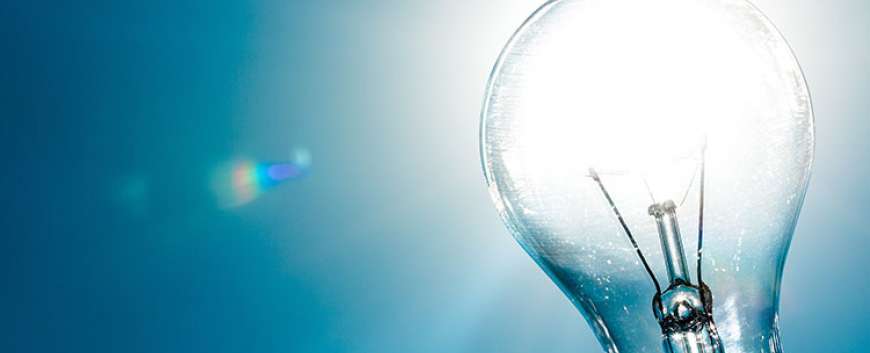- Our Story
- Publications & Resources
- Publications & Resources
- Publications
- IEEE Signal Processing Magazine
- IEEE Journal of Selected Topics in Signal Processing
- IEEE Signal Processing Letters
- IEEE/ACM Transactions on Audio Speech and Language Processing
- IEEE Transactions on Computational Imaging
- IEEE Transactions on Image Processing
- IEEE Transactions on Information Forensics and Security
- IEEE Transactions on Multimedia
- IEEE Transactions on Signal and Information Processing over Networks
- IEEE Transactions on Signal Processing
- IEEE TCI
- IEEE TSIPN
- Data & Challenges
- Submit Manuscript
- Guidelines
- Information for Authors
- Special Issue Deadlines
- Overview Articles
- Top Accessed Articles
- SPS Newsletter
- SigPort
- SPS Resource Center
- Publications Feedback
- Publications FAQ
- Blog
- News
- Dataset Papers
- Conferences & Events
- Community & Involvement
- Professional Development
- For Volunteers
- Information for Authors-OJSP
-
Home
Conferences14 April 2025 to 17 April 2025Conferences Events IEEE JSTSP Article IEEE Signal Processing Magazine IEEE TIFS Article IEEE TMM Article IEEE TSP Article Jobs in Signal Processing Lectures Machine Learning Seasonal Schools Signal Processing News SPM Article SPS Distinguished Lectures SPS Newsletter Article SPS Webinar SPS Webinars SPS Webinar Series Webinar webinars
-
Our Story
What is Signal Processing?

The technology we use, and even rely on, in our everyday lives –computers, radios, video, cell phones – is enabled by signal processing. Learn More » -
Publications & Resources
-
SPS Resources
- Signal Processing Magazine The premier publication of the society.
- SPS Newsletter Monthly updates in Signal Processing
- SPS Resource Center Online library of tutorials, lectures, and presentations.
- SigPort Online repository for reports, papers, and more.
- SPS Feed The latest news, events, and more from the world of Signal Processing.
-
SPS Resources
-
Conferences & Events
-
Community & Involvement
-
Membership
- Join SPS The IEEE Signal Processing Magazine, Conference, Discounts, Awards, Collaborations, and more!
- Chapter Locator Find your local chapter and connect with fellow industry professionals, academics and students
- Women in Signal Processing Networking and engagement opportunities for women across signal processing disciplines
- Students Scholarships, conference discounts, travel grants, SP Cup, VIP Cup, 5-MICC
- Young Professionals Career development opportunities, networking
- Get Involved
-
Technical Committees
- Applied Signal Processing Systems
- Audio and Acoustic Signal Processing
- Bio Imaging and Signal Processing
- Computational Imaging
- Image Video and Multidimensional Signal Processing
- Information Forensics and Security
- Machine Learning for Signal Processing
- Multimedia Signal Processing
- Sensor Array and Multichannel
- Signal Processing for Communication and Networking
- Signal Processing Theory and Methods
- Speech and Language Processing
- Technical Working Groups
- More TC Resources
-
Membership
-
Professional Development
-
Professional Development
- Mentoring Experiences for Underrepresented Young Researchers (ME-UYR)
- Micro Mentoring Experience Program (MiME)
- Distinguished Lecturer Program
- Distinguished Lecturers
- Distinguished Lecturer Nominations
- Past Lecturers
- Distinguished Industry Speaker Program
- Distinguished Industry Speakers
- Distinguished Industry Speaker Nominations
- Industry Resources
- IEEE Training Materials
- Jobs in Signal Processing: IEEE Job Site
-
Career Resources
- SPS Education Program Educational content in signal processing and related fields.
- Distinguished Lecturer Program Chapters have access to educators and authors in the fields of Signal Processing
- PROGRESS Initiative Promoting diversity in the field of signal processing.
- Job Opportunities Signal Processing and Technical Committee specific job opportunities
- Job Submission Form Employers may submit opportunities in the area of Signal Processing.
-
Professional Development
-
For Volunteers
-
For Board & Committee Members
- Board Agenda/Minutes* Agendas, minutes and supporting documentation for Board and Committee Members
- SPS Directory* Directory of volunteers, society and division directory for Board and Committee Members.
- Membership Development Reports* Insight into the Society’s month-over-month and year-over-year growths and declines for Board and Committee Members
-
For Board & Committee Members
Popular Pages
Today's:
- Submit a Manuscript
- (MLSP 2024) 2024 IEEE International Workshop on Machine Learning for Signal Processing
- IEEE TCI Special Section on Computational Imaging using Synthetic Apertures
- IEEE Signal Processing Letters
- Editorial Board
- (ICASSP 2024) 2024 IEEE International Conference on Acoustics, Speech and Signal Processing
- IEEE/ACM Transactions on Audio Speech and Language Processing
- Conferences & Events
- (SLT 2024) 2024 IEEE Spoken Language Technology Workshop
- IEEE Transactions on Multimedia
- (ACSSC 2024) 2024 Asilomar Conference on Signals, Systems, and Computers
- Publications & Resources
- (SAM 2024) 2024 IEEE 13th Sensor Array and Multichannel Signal Processing Workshop
- Technical Liaison Committee/Editorial Board
- Signal Processing 101
All time:
- Information for Authors
- Submit a Manuscript
- IEEE Transactions on Image Processing
- 404 Page
- IEEE/ACM Transactions on Audio Speech and Language Processing
- IEEE Transactions on Information Forensics and Security
- IEEE Transactions on Multimedia
- IEEE Signal Processing Letters
- IEEE Transactions on Signal Processing
- Conferences & Events
- IEEE Journal of Selected Topics in Signal Processing
- Information for Authors-SPL
- Conference Call for Papers
- Signal Processing 101
- IEEE Signal Processing Magazine
Last viewed:
- Speech and Language Technical Committee Winter 2022 Newsletter
- Submit a Manuscript
- A Free Machine Learning Lecture Series on the SPS Resource Center!
- Publications Board
- (MLSP 2024) 2024 IEEE International Workshop on Machine Learning for Signal Processing
- (ICASSP 2024) 2024 IEEE International Conference on Acoustics, Speech and Signal Processing
- Call for Papers: IEEE JSTSP Special Series on AI in Signal & Data Science - Toward Explainable, Reliable, and Sustainable Machine Learning
- (ICME 2024) 2024 IEEE International Conference on Multimedia and Expo
- Video & Image Processing Cup
- (PCS 2024) 2024 Picture Coding Symposium
- IEEE/ACM Transactions on Audio Speech and Language Processing
- IEEE Signal Processing Letters
- Hybrid Beamforming for 5G Millimeter-Wave Systems
- IEEE Transactions on Multimedia
- IEEE Transactions on Computational Imaging
Recent Patents in Signal Processing - Lidar Based Environment Analysis
You are here
Newsletter Menu
Newsletter Categories
Top Reasons to Join SPS Today!
1. IEEE Signal Processing Magazine
2. Signal Processing Digital Library*
3. Inside Signal Processing Newsletter
4. SPS Resource Center
5. Career advancement & recognition
6. Discounts on conferences and publications
7. Professional networking
8. Communities for students, young professionals, and women
9. Volunteer opportunities
10. Coming soon! PDH/CEU credits
Click here to learn more.
News and Resources for Members of the IEEE Signal Processing Society
Recent Patents in Signal Processing - Lidar Based Environment Analysis
For our August 2018 issue, we cover recent patents granted in the area of Lidar based scene analysis.
Patent no. 10,031,231 presents an object-detection system suitable for an automated vehicle which includes a lidar and a controller. The lidar is used to detect a point-cloud that is organized into a plurality of scan-lines. The controller is in communication with the lidar. The controller is configured to classify each detected point in the point-cloud as a ground-point or a non-ground-point, define runs of non-ground-points, where each run characterized by one or multiple instances of adjacent non-ground-points in a scan-line separated from a subsequent run of one or more non-ground-points by at least one instance of a ground-point, define a cluster of non-ground-points associated with the object. The cluster is characterized by a first run from a first scan-line being associated with a second run from a second scan-line when a first point from the first run is displaced less than a distance-threshold from a second point from the second run.
Patent no. 9,989,969 introduces an apparatus and method for visual localization of a visual camera system outputting real-time visual camera data and a graphics processing unit receiving the real-time visual camera data. The graphics processing unit accesses a database of prior map information and generates a synthetic image that is then compared to the real-time visual camera data to determine corrected position data. The graphics processing unit determines a camera position based on the corrected position data. A corrective system for applying navigation of the vehicle based on the determined camera position can be used in some embodiments.
Patent no. 9,945,950 presents a method of localizing transportable apparatus within an environment includes receiving data obtained from a first ranging sensor device that is configured to collect information relating to a 2D representation of an environment through which the transportable device is moving. Further data is received, that data being obtained from a second ranging sensor device of the transportable apparatus configured to collect information relating to at least a surface over which the transportable apparatus is moving. The ranging sensor device data is used to estimate linear and rotational velocities of the transportable apparatus and the estimates are used to generate a new 3D point cloud of the environment. The method seeks to match the new 3D point cloud with, or within, existing 3D point cloud in order to localize the transportable apparatus with respect to the existing point cloud.
As discussed in patent no 9,905,032, in scenarios involving the capturing of an environment, it may be desirable to remove temporary objects (e.g., vehicles depicted in captured images of a street) in furtherance of individual privacy and/or an unobstructed rendering of the environment. However, techniques involving the evaluation of visual images to identify and remove objects may be imprecise, e.g., failing to identify and remove some objects while incorrectly omitting portions of the images that do not depict such objects. However, such capturing scenarios often involve capturing a lidar point cloud, which may identify the presence and shapes of objects with higher precision. The lidar data may also enable a movement classification of respective objects differentiating moving and stationary objects, which may facilitate an accurate removal of the objects from the rendering of the environment (e.g., identifying the object in a first image may guide the identification of the object in sequentially adjacent images).
As detailed in patent no. 9,870,512, within machine vision, object movement is often estimated by applying image evaluation techniques to visible light images, utilizing techniques such as perspective and parallax. However, the precision of such techniques may be limited due to visual distortions in the images, such as glare and shadows. Instead, lidar data may be available (e.g., for object avoidance in automated navigation), and may serve as a high-precision data source for such determinations. Respective lidar points of a lidar point cloud may be mapped to voxels of a three-dimensional voxel space, and voxel clusters may be identified as objects. The movement of the lidar points may be classified over time, and the respective objects may be classified as moving or stationary based on the classification of the lidar points associated with the object. This classification may yield precise results, because voxels in three-dimensional voxel space present clearly differentiable statuses when evaluated over time.
In patent no. 9,710,714 point cloud data is received and a ground plane is segmented. A two-dimensional image of the segmented ground plane is generated based on intensity values of the segmented ground plane. Lane marking candidates are determined based on intensity within the generated two-dimensional image. Image data is received and the generated two-dimensional image is registered with the received image data. Lane marking candidates of the received image data are determined based on the lane marking candidates of the registered two-dimensional image. Image patches are selected from the two-dimensional image and from the received image data based on the determined lane markings. Feature maps including selected image patches from the registered two-dimensional image and received data are generated. The set of feature maps are sub-sampled, and a feature vector is generated based on the set of feature maps. Lane markings are determined from the generated feature vector.
If you have an interesting patent to share when we next feature patents related to Lidar based environment analysis, or if you are especially interested in a signal processing research field that you would want to be highlighted in this section, please send email to Csaba Benedek (benedek.csaba AT sztaki DOT mta DOT hu).
References
Number: 10,031,231
Title: Lidar object detection system for automated vehicles
Inventors: Zermas; Dimitris (Minneapolis, MN), Izzat; Izzat H. (Oak Park, CA), Mangalgiri; Anuradha (Agoura Hills, CA)
Issued: July 24, 2018
Assignee: Delphi Technologies, Inc. (Troy, MI)
Number: 9,989,969
Title: Visual localization within LIDAR maps
Inventors: Eustice; Ryan M. (Ann Arbor, MI), Wolcott; Ryan W. (Ann Arbor, MI)
Issued: June 5, 2018
Assignee: The Regents of The University of Michigan (Ann Arbor, MI)
Number: 9,945,950
Title: Method for localizing a vehicle equipped with two lidar systems
Inventors: Newman; Paul Michael (Oxford, GB), Baldwin; Ian Alan (Oxford, GB)
Issued: April 17, 2018
Assignee: Oxford University Innovation Limited (Oxford, GB)
Number: 9,905,032
Title: Object removal using lidar-based classification
Inventors: Rogan; Aaron Matthew (Westminster, CO), Kadlec; Benjamin James (Boulder, CO)
Issued: February 27, 2018
Assignee: Microsoft Technology Licensing, LLC (Redmond, WA)
Number: 9,870,512
Title: Lidar-based classification of object movement
Inventors: Rogan; Aaron Matthew (Westminster, CO)
Issued: January 16, 2018
Assignee: Uber Technologies, Inc. (San Francisco, CA)
Number: 9,710,714
Title: Fusion of RGB images and LiDAR data for lane classification
Inventors: Chen; Xin (Evanston, IL), Zang; Andi (Chicago, IL), Huang; Xinyu (Cary, NC)
Issued: July 18, 2017
Assignee: Nokia Technologies Oy (Espoo, FI)
Open Calls
Conference News
Society News
- Meet the Candidates: 2019 IEEE Division IX Director-Elect
- One Dollar. Endless Opportunity. Become an SPS Student Member for $1
- Do Not Miss This SPS Late Summer Webinar with Professor Xiao-Ping (Steven) Zhang
- Call for Nominations: Nominations and Appointments Committee and Awards Board
- Job Opportunities in Signal Processing
- New SPS Technical Interest Profile Codes
- Dr. Wing-Kin (Ken) Ma Presents at SPS German Chapter
- Election of Regional Directors-at-Large and Members-at-Large
- Nominations Open for 2018 SPS Awards
TC News
Publications News
- What Should We Learn? Special Issue on Signal and Information Processing for Critical Infrastructures
- Foundations and Trends in Localization Technologies - Part II
- What Should We Learn? Special Issue on Data Mining for Cybersecurity
- What Should We Learn? Special Issue on Biometrics and Forensics
- What Should We Learn? Special Issue on Big Data Infrastructure I
Chapter & DL News
SPS on Twitter
- DEADLINE EXTENDED: The 2023 IEEE International Workshop on Machine Learning for Signal Processing is now accepting… https://t.co/NLH2u19a3y
- ONE MONTH OUT! We are celebrating the inaugural SPS Day on 2 June, honoring the date the Society was established in… https://t.co/V6Z3wKGK1O
- The new SPS Scholarship Program welcomes applications from students interested in pursuing signal processing educat… https://t.co/0aYPMDSWDj
- CALL FOR PAPERS: The IEEE Journal of Selected Topics in Signal Processing is now seeking submissions for a Special… https://t.co/NPCGrSjQbh
- Test your knowledge of signal processing history with our April trivia! Our 75th anniversary celebration continues:… https://t.co/4xal7voFER
Home | Sitemap | Contact | Accessibility | Nondiscrimination Policy | IEEE Ethics Reporting | IEEE Privacy Policy | Terms | Feedback
© Copyright 2024 IEEE – All rights reserved. Use of this website signifies your agreement to the IEEE Terms and Conditions.
A not-for-profit organization, IEEE is the world's largest technical professional organization dedicated to advancing technology for the benefit of humanity.








